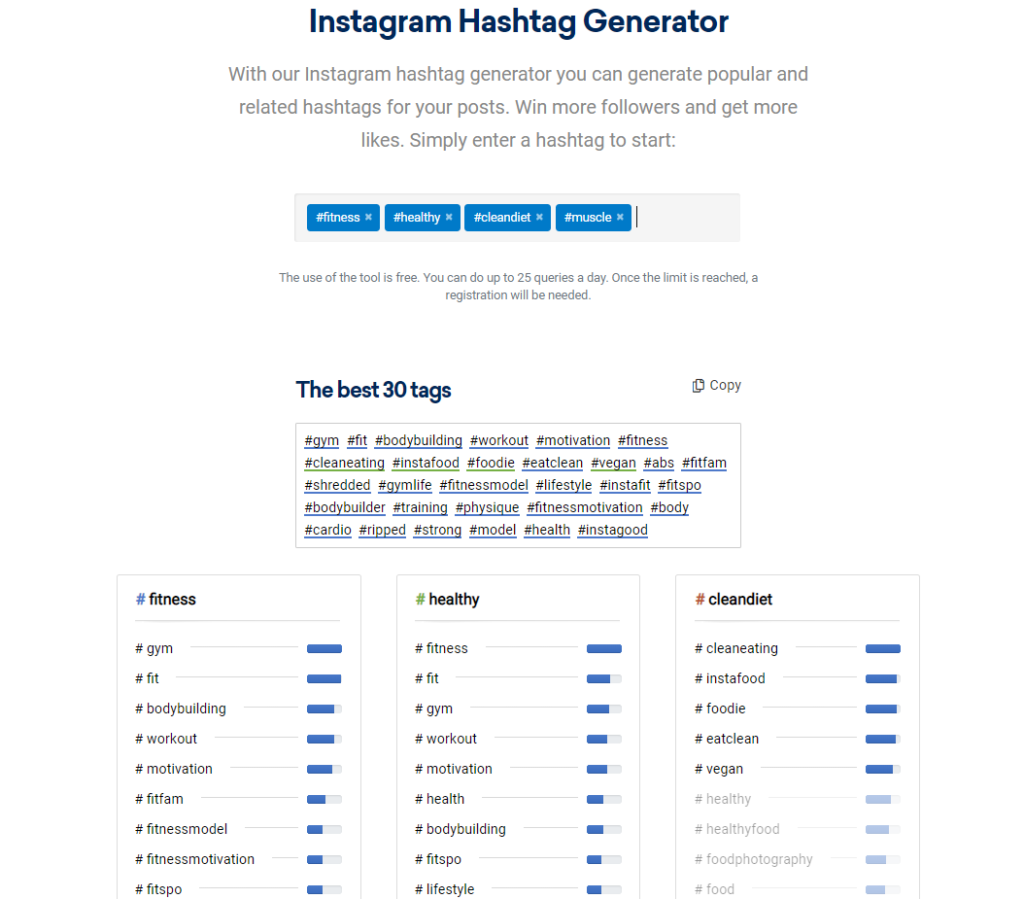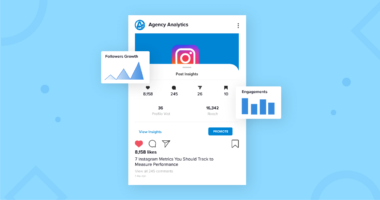Hashtags are crucial. Period. There isn’t a point to argue about.
But why are they so significant? Why are they causing such a stir in the social media marketing world?
Hashtags are crucial in growing a 100-follower Instagram account to 100,000+ followers; after all, almost 70% of Instagram posts go unnoticed. It’s the difference between wasting time on Instagram attempting to gain any interaction and reach and being instafamous and raking in cash. By simply adding one hashtag to your message, you may boost interaction by 12.6 percent.
As a result, you can’t just put a few hashtags on your post as a last-minute addition. To get great results, you’ll need to do a lot of research, build a list, and then test hashtags over and over again. If there isn’t much of a distinction between hashtagged and non-hashtagged posts, your whole Instagram hashtag strategy is faulty.
Here’s how to do it.
Importance of the Instagram Hashtags
Since 2010, Instagram has done a bunch of changes, but one thing has remained constant: the importance of Instagram hashtags.
Using relevant, targeted hashtags on your Instagram posts and stories is still one of the greatest methods to reach new audiences in 2021. And this may lead to more engagement, followers, and consumers for your company.
Hashtags on Instagram organise and categorise images and videos. The correct hashtags may bring you in front of your target audience, even if they haven’t connected with you previously, because hashtags are used with the goal of discovering content. The photograph is catalogued by utilising these three hashtags, making it easy for other Instagram users who love healthy foods to locate it.
When a food blogger posts a photo of a beautiful smoothie bowl to Instagram, they could use the hashtags #superfoods, #cleaneating, and #vegansofig.
If you have a public Instagram account and tag a post with a hashtag, that post will appear on the hashtag page (which is essentially a directory of all the images and videos tagged with that hashtag).
The photograph is catalogued by utilising these three hashtags, making it easy for other Instagram users who love healthy foods to locate it.
Here are a few things to remember:
- When users with private profiles tag posts, they won’t show up on hashtag pages since they’re private.
- In hashtags, numbers are permitted. Spaces and special characters, such as $ or percent, will not function.
- Hashtags may only be added to your own posts. You can’t add tags to other people’s pictures or videos.
- In a post, you may use up to 30 hashtags, and in Instagram Stories, you can use up to 10.
Things to Remember for Instagram Hashtag Research
1. Avoid Stupid Hashtags
Why do businesses continue to use hashtags such as #likeforlike, #follow4follow, #love, and #goodday in their Instagram posts? WHY??!
Long-term, these gimmicky, generic hashtags offer little to enhance reach or engagement. You could get a slew of spam comments if you’re lucky.
Your post will not only be buried among the millions of other posts with these hashtags being uploaded every minute, but you’ll also be wasting valuable hashtag space that might have been better spent with a better hashtag. Additionally, it gives your viewers the idea that your content is spammy.
2. Add Hashtags in Comments
Instagram is all about giving your audience a visually appealing experience. Everything should be tidy, attractive, and well-coordinated.
When viewers click ‘More,’ a complete block of hashtags appears in the caption.
And don’t believe that using hashtags in your comments will have any effect on your engagement. Hashtags function in the same way whether they’re used in the caption or in the comments.
So, if you’re on the lookout for,
- A more pleasant user experience.
- A well written caption. There are no distractions.
- Initiating discussion in the comments area.
3. Don’t Use same Hashtags on every Post
Are you tempted to use the same hashtags for all of your Instagram posts? Don’t. That is a poor strategy.
To reach a new audience (which means more followers), try new hashtag combinations, and keep on top of the ever-changing nature of hashtags, change your hashtags for every post you publish. A hashtag may enjoy a spike in interaction today but fail to deliver meaningful results the next day. This is the life of a hashtag, especially one that is focused on a certain brand.
A simple method to accomplish this is to study and build a list of 100 or so popular hashtags with maximum reach in your niche, and then select 30 relevant hashtags from the list each time you wish to publish a new post. You may also build hashtag sets for specific sorts of postings.
You’re good to go if you keep picking and choosing hashtags from that list.
Instagram Hashtag Research
Now comes the fun part: finding the ideal hashtags for your Instagram photos. Many users utilise tools and applications to help speed up this process, and we’ve dedicated a whole page to our favourite hashtags tools.
However, tools will not guarantee you the greatest results; they will just provide you with a starting place for your investigation. You’ll still have to do some manual research to locate the most successful hashtags that are laser-targeted and will give your article the greatest exposure.
Here’s how you can accomplish Instagram hashtag Research, using or not using hashtag tools.
1. Find the popular posts
Ones with hashtags generate 70 percent higher interaction on Instagram than posts without them. As a result, they’re more popular and visible on Instagram than those without hashtags. All you have to do is look for the most popular posts in your field, grab their hashtags, and create a list of the best hashtags to utilise in your own posts. Simple.
Tip: You may also examine and deconstruct these posts to understand what makes them so successful, and then include similar elements into your own pieces. But that’ll have to wait for another day.
So, where do you look for popular posts?

2. Niche Hashtags
You may now follow hashtags on Instagram. When you follow a hashtag, all of the trending posts in that hashtag will appear in your Instagram feed and Stories. So, if you follow a prominent hashtag in your niche, top posts using that hashtag will display in your feed, and you can quickly build a list of all the other hashtags they’ve used.
3. Tag Search
If you follow this hashtag now, you’ll get a list of related hashtags that you may also follow.
You’ll see all the popular posts with that hashtag if you follow at least 8 to 10 related hashtags. If you’re looking to reach a local audience, include your location (country, city, state, or region) in your niche keyword and use the first trending hashtag that appears.
Make a list of all the hashtags used in popular postings.
You may also keep track of all the hashtags you’re following and remove or add more as your hashtag study progresses.
4. Explore page
This is a tried-and-true method of locating popular hashtags in your niche for Instagram hashtag Research.
Click on hashtags after searching for terms in your niche.
Each of the top 9 posts may be accessed by clicking on it.
Make a list of the hashtags they’re using on social media. (Look at their initial remark if the hashtags aren’t accessible in the post caption.)
5. Google
Many well-known niche influencers have blogs where they share their Instagram techniques. You’ll even come across a few postings with famous hashtags that so and so should utilise.
6. Hashtag tools
Instead of creating up hashtags or using Instagram’s (limited) search feature, there are literally THOUSANDS of hashtag tools that can help you create hashtags, track their usage, and much more. What is the most effective approach to get started? Of sure, give one a try!
Filter out & choose suitable Instagram Hashtag
Not all of the hashtags you’ve come across can be utilised. You’ll need to filter this list, removing any hashtags that aren’t relevant to your business and grouping the ones that remain.
To begin, delete any hashtags that aren’t related to your sector. As a result, hashtags such as #likeforlike, #beautifulday, #sunset, and so on are popular. Remove them.
Remove any hashtags that occur several times.
Remove geographic hashtags from your post if they aren’t from your region or where your target audience lives. Allow it to be if you’re aiming for an international (and distant) audience.
Also, search for and eliminate any other hashtags that you believe are entirely unrelated to your company on Instagram.
The greater the number of hashtags on this list, the better. Make a list of 30 hashtags, including a few from each group, and include them into your message. Make a list of 30 hashtags and utilise them in a subsequent post. Try out different hashtag combinations to discover which ones work best.
This technique can help you locate brand hashtags, curator hashtags, location-based hashtags, and pretty much any hashtags. Keep repeating this process and upgrading your hashtag list from time to time to ensure you don’t miss out on any super-active, brand-new hashtags.
Conclusion
Thus concludes Instagram hashtag Research. Make this your Instagram hashtag strategy motto, and you’ll see an increase in new target followers, more interaction, and a loyal community with each hashtagged post.








